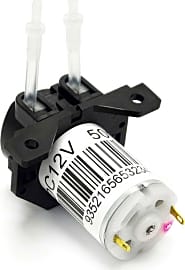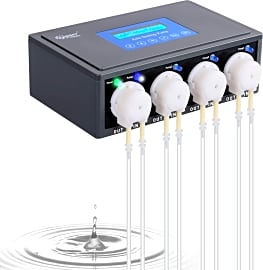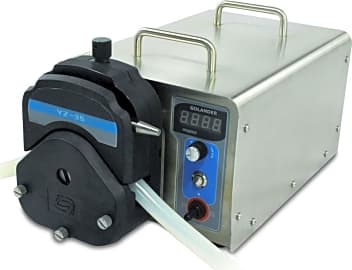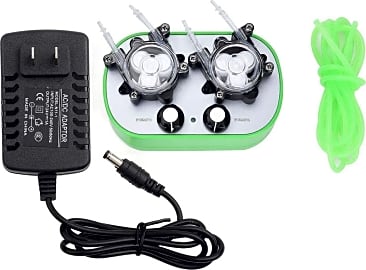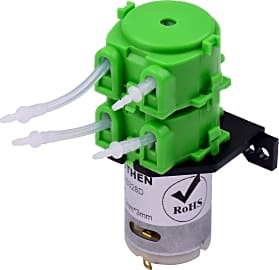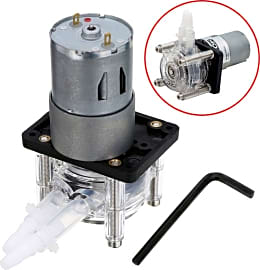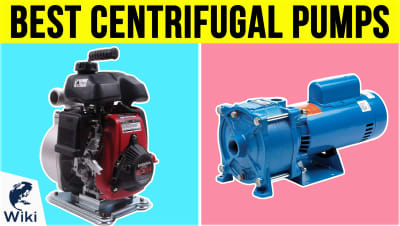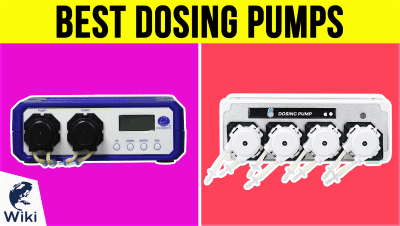The 10 Best Peristaltic Pumps

This wiki has been updated 26 times since it was first published in August of 2019. A peristaltic pump utilizes the action of rollers to push fluids through a tube -- a mechanism that makes them ideally suited to handling fluids containing trapped gases or particulate matter. They are commonly used for a variety of purposes, including in sterile applications, filling containers with consumables, in agriculture, and in dosing pumps that drip-feed mineral solutions into aquariums. When users buy our independently chosen editorial recommendations, we may earn commissions to help fund the Wiki.
Editor's Notes
March 02, 2021:
To offer a little more variability to our list, I’ve added some more powerful, high-end pumps with greater flow rates, like the Golander WG600S. As a result, there’s a massive range of great models to choose from depending on the kind of capacity you’re looking for, and we still have many lower-capacity, disposable-type pumps like the Gikfun AE1207, which are great for laboratory use in educational settings, like if you’re titrating.
Also, while we do have a separate list specifically for dosing pumps, I’ve snuck in the Hygger 4-channel here, and I suppose you could also use the Aibecy Dual-Channel or any multi-channel pump for similar purposes, like if you’re looking to add multiple solutions with different minerals/solvents to your aquarium. It’s interesting to note that these pumps do appear to get exponentially more expensive with what seems like only a slight increase in flow rate, though, do remember that you’re putting out a lot more power, as the RPM needs to increase in order to increase the flow rate.
September 18, 2019:
A peristaltic pump operates on a system of internal rollers that ‘push’ liquid entering through a tube from one end out to the other end.
When shopping for a model, you’ve got to be careful not to mistake diaphragm for peristaltic. Both are positive displacement pumps (the other primary type being centrifugal pumps) that are advertised for similar applications; a good rule of thumb is that unless the manufacturer/seller explicitly mentions the word ‘peristaltic’, there's no guarantee that it's not another type of pump.
Compared to diaphragm pumps, peristaltic pumps are generally better at self-priming, less susceptible to flow rate changes due to pressure and better at handling ‘dirty’ fluids or liquids with lots of particles, among other benefits.
While nearly all peristaltic pumps run on a DC motor, most cheaper options come without a transformer/DC power source, and thus an external DC power source or transformer needs to be made available from the consumers end.
You can connect a variable DC source to the motor cables, which can be used to lower the voltage and in turn control the RPM (Rotations Per Minute) of the internal rollers, and therefore the flow rate. Models like the Stenner 85MFH2A1S and Anyilon SDK-101 come with an internal AC transformer and adapter that can be plugged into the mains.
The Anyilon has the built-in advantage of a voltage controller on the dashboard, while the Stenner does not; in that sense, its a great model that combines ease of use with variable rotational speed and a durable, long-lasting build.
The Gikfun AE1207 on the other hand is the best value for money for an end user who's looking for a no-frills model. Other models at a similar price point tend to suffer from overheating and other problems that the AE1207 avoids for the most part.



